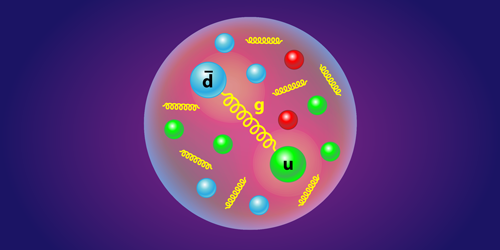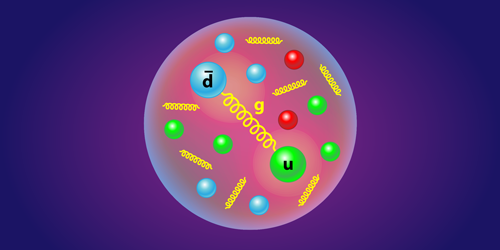More Gluons in the Pion
At first glance, the pion seems simple. It’s the lightest meson, made up of a quark-antiquark pair. But like everything in quantum chromodynamics (QCD)—the theory of the strong force—things get more complicated the closer you look. The pion, as it turns out, contains not just two “valence” quarks but also a “sea” of virtual quarks that pop in and out of existence. In addition, the pion hosts gluons, which are the carriers of the strong force that binds quarks together (see 6 March 2017 Viewpoint). Previous work suggested that gluons contribute only 10% of the pion’s momentum at typical experimental energies of a few GeV, but a new study incorporating old and new data has found that the gluon fraction is 30%.
Some of the first efforts at dissecting the pion’s interior occurred in the 1980s, when researchers recorded the scattering of pions off fixed nuclear targets. However, the results were uncertain because of a lack of data at low momentum. In the 2000s, scientists began extracting information about the pion using electron-proton collisions that produce neutrons, a process that, at certain energies and production angles, involves the exchange of a pion.
Researchers from North Carolina State University in Raleigh, the University of Connecticut in Storrs, and Jefferson Lab, Virginia, have now combined the neutron production data with the older pion-nucleus scattering data. To make the data sets compatible, they utilized QCD predictions for both high- and low-energy processes. Their final breakdown of the pion in terms of momentum contribution at GeV experimental energies is 54% from valence quarks, 16% from sea quarks, and 30% from gluons.
This research is published in Physical Review Letters.
–Michael Schirber
Michael Schirber is a Corresponding Editor for Physics based in Lyon, France.
Correction (10 October 2018): The article was revised to clarify that one of the quarks in the pion is an antiquark.





